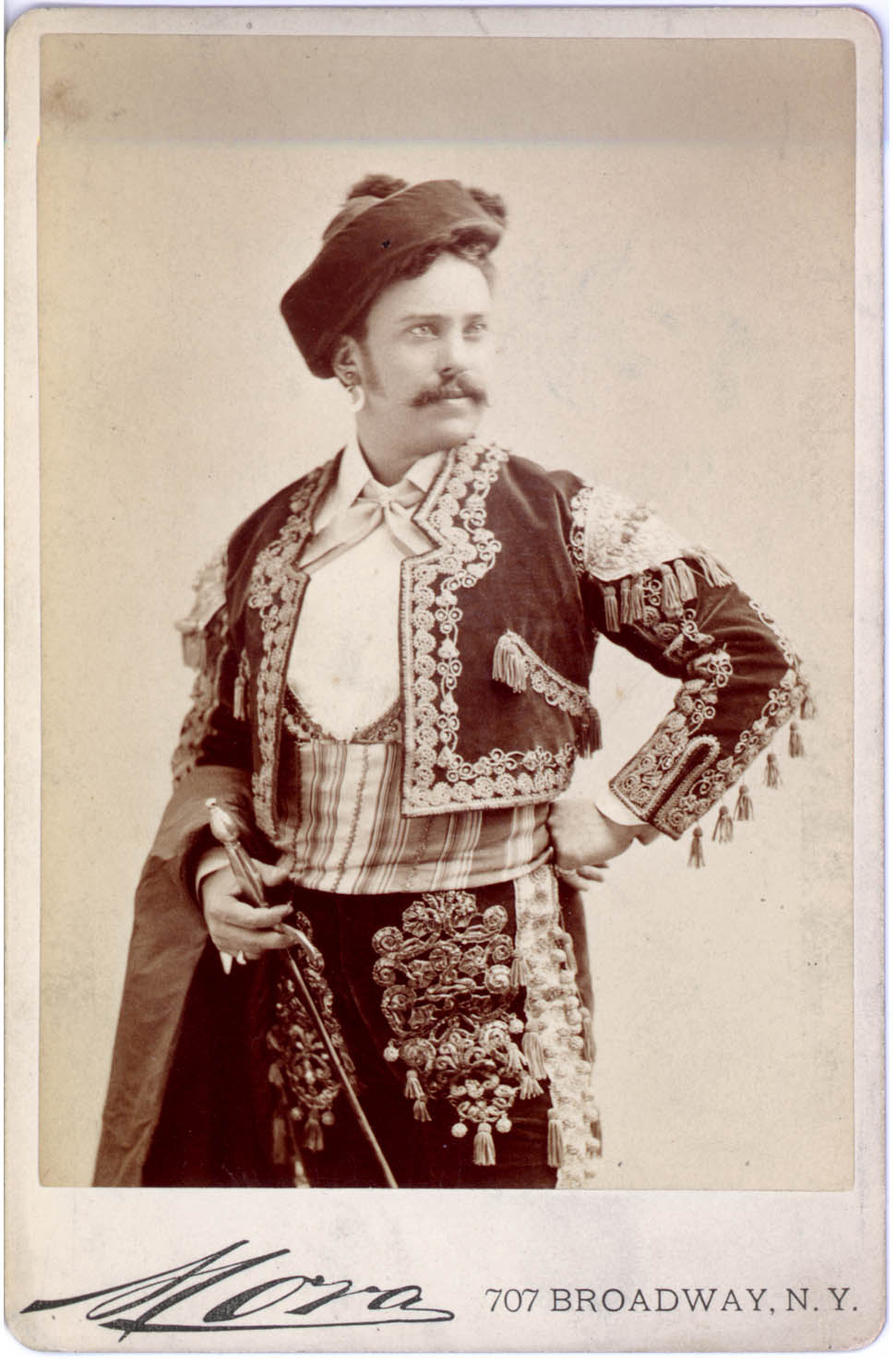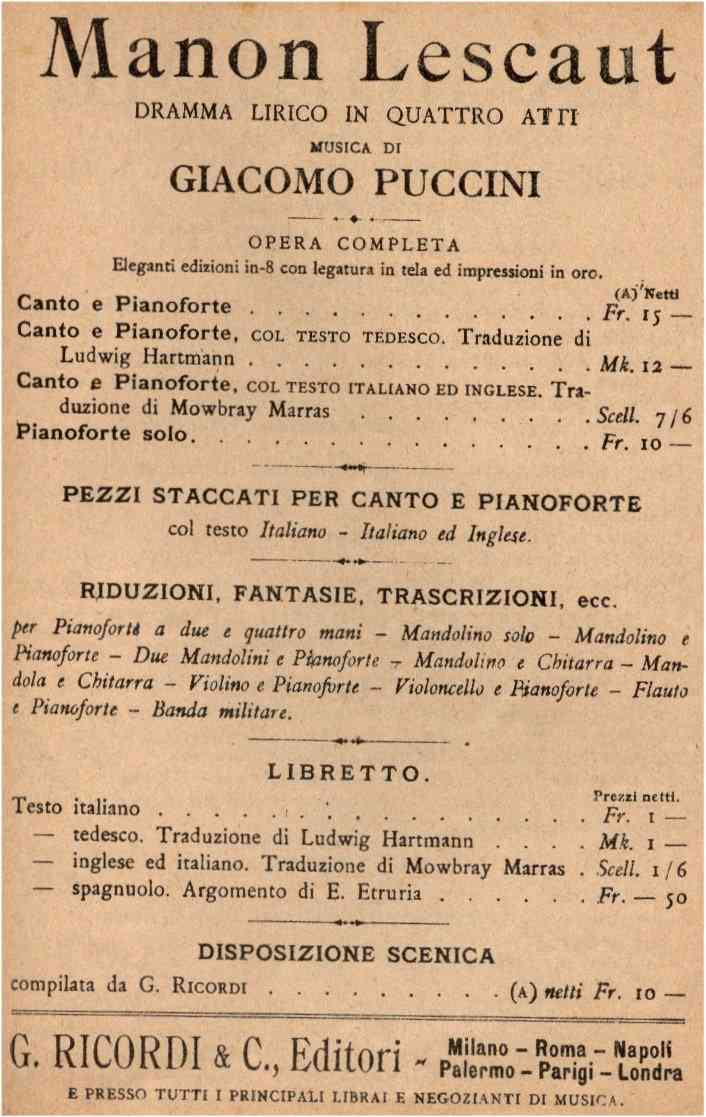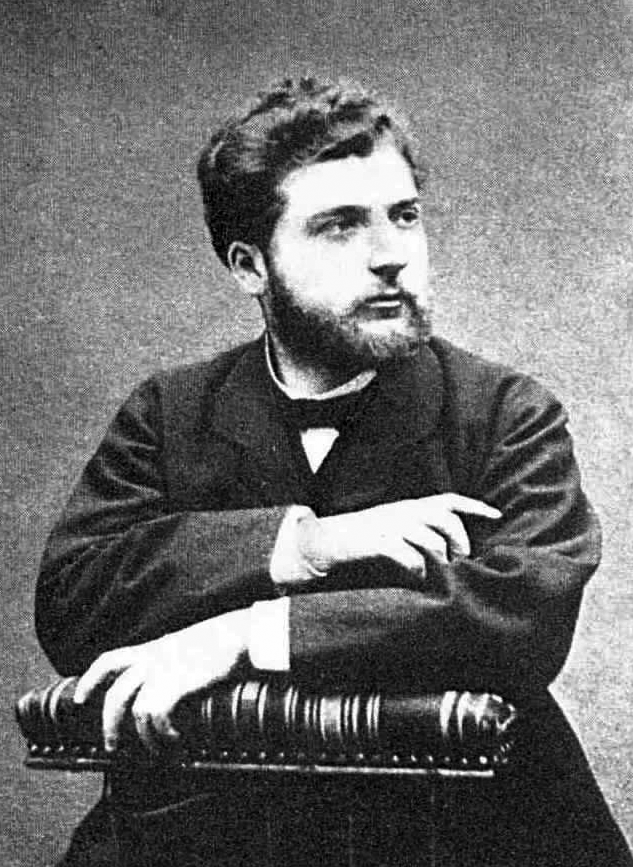|
Giuseppe Del Puente
Giuseppe Del Puente (January 30, 1841 – May 25, 1900) was an Italian baritone, who played in important role in operatic life in the United States in the 19th century, as he was its first baritone star singer, the first performer of many standard-repertory baritone roles in the United States, and part of the cast of the inaugural performance of the Metropolitan Opera in 1883. Early years and education Giuseppe Camillo Carlo Del Puente was born in Naples, Italy, to Francesco Del Puente and Vincenza Vastarelli. From a noble family of Spanish origin, Giuseppe eventually inherited the title Marquis de Murcia. Del Puente began his studies at the Conservatory of San Pietro a Majella as a young boy, originally devoting himself to cello under Gaetano Ciandelli. Upon discovering a fine baritone voice, he studied singing under Alfonso Guercia and Domenico Scafati, himself a student of Alessandro Busti and the castrato Girolamo Crescentini. When at age 17 he joined Garibaldi's army, h ... [...More Info...] [...Related Items...] OR: [Wikipedia] [Google] [Baidu] |
Naples
Naples (; it, Napoli ; nap, Napule ), from grc, Νεάπολις, Neápolis, lit=new city. is the regional capital of Campania and the third-largest city of Italy, after Rome and Milan, with a population of 909,048 within the city's administrative limits as of 2022. Its province-level municipality is the third-most populous metropolitan city in Italy with a population of 3,115,320 residents, and its metropolitan area stretches beyond the boundaries of the city wall for approximately 20 miles. Founded by Greeks in the first millennium BC, Naples is one of the oldest continuously inhabited urban areas in the world. In the eighth century BC, a colony known as Parthenope ( grc, Παρθενόπη) was established on the Pizzofalcone hill. In the sixth century BC, it was refounded as Neápolis. The city was an important part of Magna Graecia, played a major role in the merging of Greek and Roman society, and was a significant cultural centre under the Romans. Naples served a ... [...More Info...] [...Related Items...] OR: [Wikipedia] [Google] [Baidu] |
Faust (opera)
''Faust'' is an opera in five acts by Charles Gounod to a French libretto by Jules Barbier and Michel Carré from Carré's play ''Faust et Marguerite'', in turn loosely based on Johann Wolfgang von Goethe's ''Faust, Part One''. It debuted at the Théâtre Lyrique on the Boulevard du Temple in Paris on 19 March 1859, with influential sets designed by Charles-Antoine Cambon and Joseph Thierry, Jean Émile Daran, Édouard Desplechin, and Philippe Chaperon. Performance history The original version of Faust employed spoken dialogue, and it was in this form that the work was first performed. The manager of the Théâtre Lyrique, Léon Carvalho cast his wife Caroline Miolan-Carvalho as Marguerite and there were various changes during production, including the removal and contraction of several numbers. The tenor Hector Gruyer was originally cast as Faust but was found to be inadequate during rehearsals, being eventually replaced by a principal of the Opéra-Comique, Joseph-Théodore ... [...More Info...] [...Related Items...] OR: [Wikipedia] [Google] [Baidu] |
Auditorium Theatre
The Auditorium Theatre is a music and performance venue located inside the Auditorium Building at 50 Ida B. Wells Drive in Chicago, Illinois. Inspired by the Richardsonian Romanesque Style of architect Henry Hobson Richardson, the building was designed by Dankmar Adler and Louis Sullivan and completed in 1889. The Chicago Symphony Orchestra performed in the theatre until 1904 as well as the Chicago Grand Opera Company and its successors the Chicago Opera Association and Chicago Civic Opera until its relocation to the Civic Opera House in 1929. The theatre currently hosts performances by the Joffrey Ballet, in addition to a variety of concerts, musicals, performances, and events. Since the 1940s, it has been owned by Roosevelt University and since the 1960s it has been refurbished and managed by an independent non-profit arts organization. History Opening and early years In 1885, Chicago-based businessman and philanthropist Ferdinand Wythe Peck began ambitious plans for th ... [...More Info...] [...Related Items...] OR: [Wikipedia] [Google] [Baidu] |
Manon Lescaut (Puccini)
''Manon Lescaut'' () is an Italian-language opera in four acts composed by Giacomo Puccini between 1889 and 1892 to a libretto by Luigi Illica, Marco Praga and , based on the 1731 novel '' Histoire du Chevalier des Grieux, et de Manon Lescaut'' by the Abbé Prévost. The opera was first performed in 1893 in Turin, at the Teatro Regio. Composition history The libretto is in Italian, and was cobbled together by five librettists whom Puccini employed: Ruggero Leoncavallo, Marco Praga, Giuseppe Giacosa, and Luigi Illica. The publisher, Giulio Ricordi, and the composer himself also contributed to the libretto. So confused was the authorship of the libretto that no one was credited on the title page of the original score. However, it was Illica and Giacosa who completed the libretto and went on to contribute the libretti to Puccini's next three – and most successful – works, ''La Bohème'', ''Tosca'' and ''Madama Butterfly''. Puccini took some musical elements in ''Manon Lesca ... [...More Info...] [...Related Items...] OR: [Wikipedia] [Google] [Baidu] |
L'amico Fritz
''L'amico Fritz'' () is an opera in three acts by Pietro Mascagni, premiered in 1891 from a libretto by P. Suardon ( Nicola Daspuro) (with additions by Giovanni Targioni-Tozzetti), based on the French novel ''L'ami Fritz'' by Émile Erckmann and Pierre-Alexandre Chatrian. While the opera enjoyed some success in its day and is probably Mascagni's most famous work after ''Cavalleria rusticana'', today it is performed far more rarely than ''Cavalleria'', which remains Mascagni's only enduringly popular work outside Italy, where ''L'amico Fritz'' and ''Iris'' are still in the active repertoire. The "Cherry Duet" between Fritz and Suzel in Act 2 is the best known piece in the opera and is often performed separately in concert. Performance history The opera was first performed in Rome , established_title = Founded , established_date = 753 BC , founder = King Romulus (legendary) , image_map = Map of comune of Rome (metropolitan city of Capital Rome ... [...More Info...] [...Related Items...] OR: [Wikipedia] [Google] [Baidu] |
Les Pêcheurs De Perles
' (''The Pearl Fishers'') is an opera in three acts by the French composer Georges Bizet, to a libretto by Eugène Cormon and Michel Carré. It was premiered on 30 September 1863 at the Théâtre Lyrique in Paris, and was given 18 performances in its initial run. Set in ancient times on the island of Ceylon (Sri Lanka), the opera tells the story of how two men's vow of eternal friendship is threatened by their love for the same woman, whose own dilemma is the conflict between secular love and her sacred oath as a priestess. The friendship duet "", generally known as "The Pearl Fishers Duet", is one of the best-known in Western opera. At the time of the premiere, Bizet (born on 25 October 1838) was not yet 25 years old: he had yet to establish himself in the Parisian musical world. The commission to write ' arose from his standing as a former winner of the prestigious Prix de Rome. Despite a good reception by the public, press reactions to the work were generally hostile and dismiss ... [...More Info...] [...Related Items...] OR: [Wikipedia] [Google] [Baidu] |
Les Huguenots
() is an opera by Giacomo Meyerbeer and is one of the most popular and spectacular examples of grand opera. In five acts, to a libretto A libretto (Italian for "booklet") is the text used in, or intended for, an extended musical work such as an opera, operetta, masque, oratorio, cantata or Musical theatre, musical. The term ''libretto'' is also sometimes used to refer to the t ... by Eugène Scribe and Émile Deschamps, it premiered in Paris on 29 February 1836. Composition history ''Les Huguenots'' was some five years in creation. Meyerbeer prepared carefully for this opera after the sensational success of ''Robert le diable'', recognising the need to continue to present lavish staging, a highly dramatic storyline, impressive orchestration and virtuoso parts for the soloists – the essential elements of the new genre of Grand Opera. Meyerbeer and his librettist for ''Robert le Diable'', Eugène Scribe, had agreed to collaborate on an epic work concerning the French War ... [...More Info...] [...Related Items...] OR: [Wikipedia] [Google] [Baidu] |
The Barber Of Seville
''The Barber of Seville, or The Useless Precaution'' ( it, Il barbiere di Siviglia, ossia L'inutile precauzione ) is an ''opera buffa'' in two acts composed by Gioachino Rossini with an Italian libretto by Cesare Sterbini. The libretto was based on Pierre Beaumarchais's French comedy ''The Barber of Seville'' (1775). The première of Rossini's opera (under the title ''Almaviva, o sia L'inutile precauzione'') took place on 20 February 1816 at the Teatro Argentina, Rome, with designs by Angelo Toselli. Rossini's ''Barber of Seville'' has proven to be one of the greatest masterpieces of comedy within music, and has been described as the opera buffa of all "opere buffe". After two hundred years, it remains a popular work. Composition history Rossini's opera recounts the events of the first of the three plays by French playwright Pierre Beaumarchais that revolve around the clever and enterprising character named Figaro, the barber of the title. Mozart's opera ''The Marriage of Fi ... [...More Info...] [...Related Items...] OR: [Wikipedia] [Google] [Baidu] |
La Traviata
''La traviata'' (; ''The Fallen Woman'') is an opera in three acts by Giuseppe Verdi set to an Italian libretto by Francesco Maria Piave. It is based on ''La Dame aux camélias'' (1852), a play by Alexandre Dumas ''fils'' adapted from his own 1848 novel. The opera was originally titled ''Violetta'', after the main character. It was first performed on 6 March 1853 at La Fenice opera house in Venice. Piave and Verdi wanted to follow Dumas in giving the opera a contemporary setting, but the authorities at La Fenice insisted that it be set in the past, "c. 1700". It was not until the 1880s that the composer's and librettist's original wishes were carried out and " realistic" productions were staged. ''La traviata'' has become immensely popular and is among the most frequently performed of all operas. Composition history For Verdi, the years 1851 to 1853 were filled with operatic activity. First, he had agreed with the librettist Salvadore Cammarano on a subject for what would ... [...More Info...] [...Related Items...] OR: [Wikipedia] [Google] [Baidu] |
Mignon
''Mignon'' is an 1866 ''opéra comique'' (or opera in its second version) in three acts by Ambroise Thomas. The original French libretto was by Jules Barbier and Michel Carré, based on Goethe's 1795-96 novel '' Wilhelm Meisters Lehrjahre''. The Italian version was translated by Giuseppe Zaffira. The opera is mentioned in James Joyce's " The Dead" (''Dubliners'') and Willa Cather's '' The Professor's House''. Thomas's goddaughter Mignon Nevada was named after the main character. Performance history The first performance was at the Opéra-Comique in Paris on 17 November 1866. The piece proved popular: more than 100 performances took place by the following July, the 1,000th was given there on 13 May 1894, and the 1,500th on 25 May 1919. The opera was also adapted and translated into German for performance in Berlin with Madame Lucca as Mignon. Lucca was well received, but the German critics were unhappy with the opera's alterations to the Goethe original, so Thomas composed a shor ... [...More Info...] [...Related Items...] OR: [Wikipedia] [Google] [Baidu] |
Cavalleria Rusticana
''Cavalleria rusticana'' (; Italian for "rustic chivalry") is an opera in one act by Pietro Mascagni to an Italian libretto by Giovanni Targioni-Tozzetti and Guido Menasci, adapted from an 1880 short story of the same name and subsequent play by Giovanni Verga. Considered one of the classic ''verismo'' operas, it premiered on 17 May 1890 at the Teatro Costanzi in Rome. Since 1893, it has often been performed in a so-called ''Cav/Pag'' double-bill with ''Pagliacci'' by Ruggero Leoncavallo. Composition history In July 1888 the Milanese music publisher Edoardo Sonzogno announced a competition open to all young Italian composers who had not yet had an opera performed on stage. They were invited to submit a one-act opera which would be judged by a jury of five prominent Italian critics and composers. The best three would be staged in Rome at Sonzogno's expense. Mascagni heard about the competition only two months before the closing date and asked his friend Giovanni Targioni-Tozze ... [...More Info...] [...Related Items...] OR: [Wikipedia] [Google] [Baidu] |






